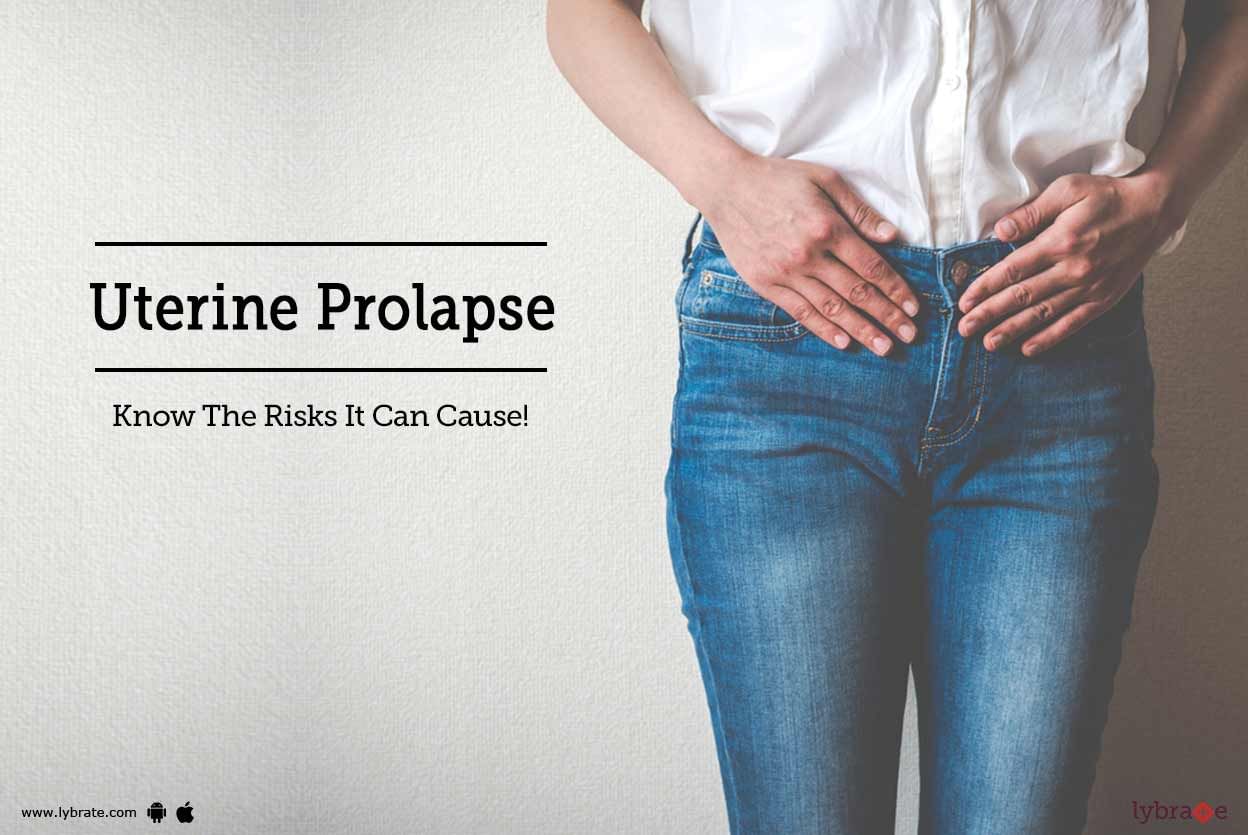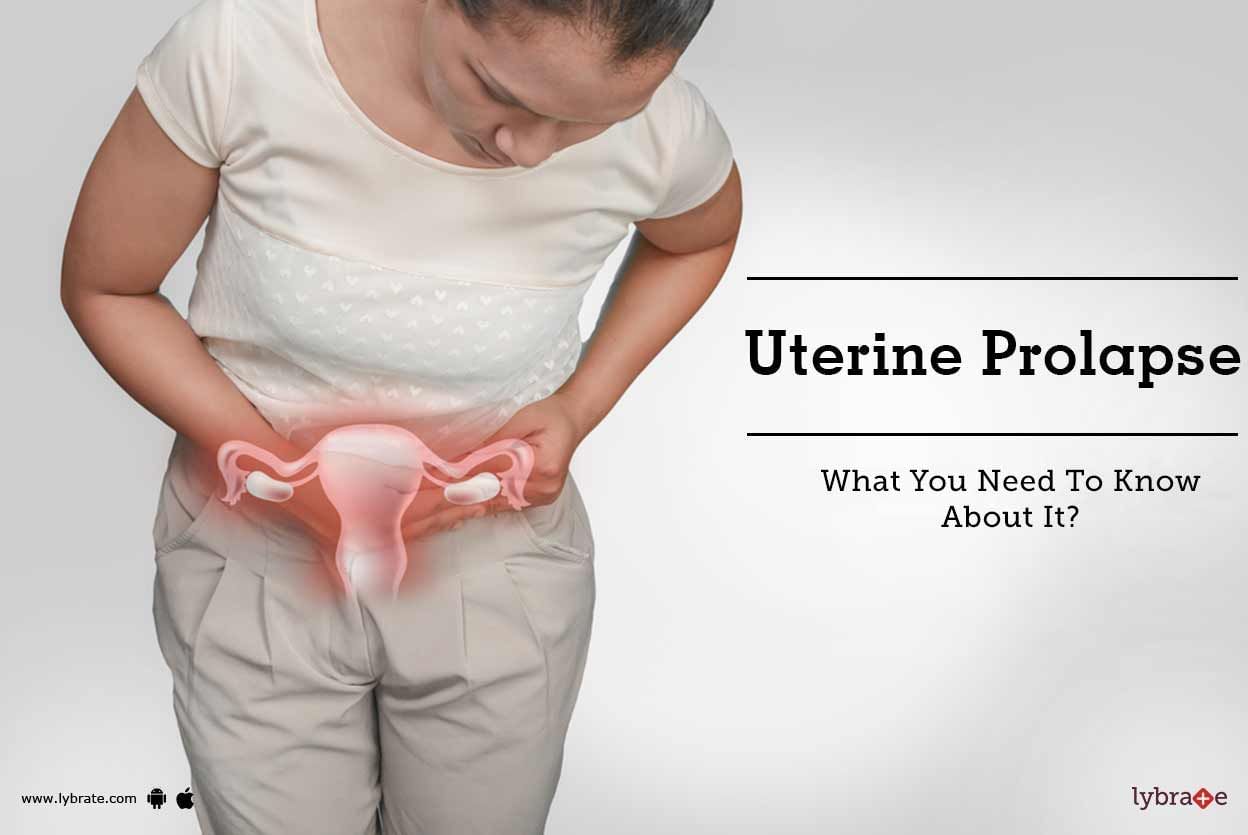Get the App
For Doctors
Login/Sign-up
About
Health Feed
Find Doctors
Health Packages
AllQ&AsTipsQuizzes
Pelvic Organ Prolapse Tips
Last Updated: 7 years ago• Featured Tip
Share
Bookmark
Report
The uterus is a muscular organ which houses the fertilized egg and gives it space to grow through pregnancy. It is held in place by various ligaments and tissues, as it is suspended in the pelvic area. Uterine prolapse is when the uterus slips down and is not able to stay in place. It can slip into the vaginal cavity, and may sometimes be protruding through the vagina.
Causes:
The female hormone estrogen plays a vital role in keeping this in place. With age, as the hormone le...more
Causes:
The female hormone estrogen plays a vital role in keeping this in place. With age, as the hormone le...more
Last Updated: 7 years ago• Featured Tip
Share
Bookmark
Report
The uterus or womb is a strong structure that is held up by the pelvic muscles and tendons. In case that these muscles or tendons extend or get distinctly powerless, they are no longer ready to support the uterus, bringing about prolapse. Uterine prolapse happens when the uterus hangs or slips from its ordinary position, into the vagina or birth channel.
Uterine prolapse might be fragmented or complex. A deficient prolapse happens when the uterus is just halfway drooping into the vagina...more
Uterine prolapse might be fragmented or complex. A deficient prolapse happens when the uterus is just halfway drooping into the vagina...more
Last Updated: 7 years ago• Featured Tip
Share
Bookmark
Report
In medical terms, the pelvic floor refers to a group of muscles in the pelvic area. These muscles provide support to the organs in the pelvic region, including the bladder, uterus (women), prostate (men), and rectum.
What is pelvic floor dysfunction?
This is a medical condition that is used to refer to a situation when you are unable to control the functioning of the pelvic floor. It means you fail to control the bowel movement. People suffering from pelvic floor dysfunction use the...more
What is pelvic floor dysfunction?
This is a medical condition that is used to refer to a situation when you are unable to control the functioning of the pelvic floor. It means you fail to control the bowel movement. People suffering from pelvic floor dysfunction use the...more
Last Updated: 7 years ago• Featured Tip
Share
Bookmark
Report
The uterus or womb is a strong structure that is held up by the pelvic muscles and tendons. In case that these muscles or tendons extend or get distinctly powerless, they are no longer ready to support the uterus, bringing about prolapse. Uterine prolapse happens when the uterus hangs or slips from its ordinary position, into the vagina or birth channel.
Uterine prolapse might be fragmented or complex. A deficient prolapse happens when the uterus is just halfway drooping into the vagina...more
Uterine prolapse might be fragmented or complex. A deficient prolapse happens when the uterus is just halfway drooping into the vagina...more
Last Updated: 7 years ago• Featured Tip
Share
Bookmark
Report
The condition of uterine prolapse takes place when the floor muscles (and sometimes, ligaments) of the pelvis region gets stretched overly and then gradually weakens, thus becoming unable to provide adequate support to the uterus. This often leads to the protrusion or the slipping down of the uterus out of the vaginal opening. Though it can affect women of any age, it usually happens to women after menopause, especially those who have already had deliveries out of the vagina.
Causes:more
Causes:
Last Updated: 7 years ago• Featured Tip
Share
Bookmark
Report
In medical terms, the pelvic floor refers to a group of muscles in the pelvic area. These muscles provide support to the organs in the pelvic region, including the bladder, uterus (women), prostate (men), and rectum.
What is pelvic floor dysfunction?
This is a medical condition that is used to refer to a situation when you are unable to control the functioning of the pelvic floor. It means you fail to control the bowel movement. People suffering from pelvic floor dysfunction use the...more
What is pelvic floor dysfunction?
This is a medical condition that is used to refer to a situation when you are unable to control the functioning of the pelvic floor. It means you fail to control the bowel movement. People suffering from pelvic floor dysfunction use the...more
Last Updated: 7 years ago• Featured Tip
Share
Bookmark
Report
The uterus or womb is a strong structure that is held up by the pelvic muscles and tendons. In case that these muscles or tendons extend or get distinctly powerless, they are no longer ready to support the uterus, bringing about prolapse. Uterine prolapse happens when the uterus hangs or slips from its ordinary position, into the vagina or birth channel.
Uterine prolapse might be fragmented or complex. A deficient prolapse happens when the uterus is just halfway drooping into the vagina...more
Uterine prolapse might be fragmented or complex. A deficient prolapse happens when the uterus is just halfway drooping into the vagina...more
Last Updated: 7 years ago• Featured Tip
Share
Bookmark
Report
Uterine prolapse is a condition which occurs due to a weakness in the muscles and ligaments of the pelvic floor which are responsible for supporting the uterus. This condition results in the bulging out of the uterus from the vagina. The continuous stretching in the muscles of the pelvic floor due to the lifting of heavy things might initiate uterine prolapse. If you suffer from severe uterine prolapse, the doctors might suggest laparoscopic surgery to get rid of the pain. Lack of diagnosis migh...more
Last Updated: 8 years ago• Featured Tip
Share
Bookmark
Report
The uterus is set up inside the pelvis with different muscles, tissue, and tendons. Due to pregnancy, labour or complicated delivery, in a few ladies, these muscles tend to weaken. Additionally, as a woman ages and with a loss of the hormone oestrogen, her uterus can drop into the vaginal canal, bringing about the condition known as a uterine prolapse.
The following conditions can bring about a prolapsed uterus:
Pregnancy with complicated or even ordinary delivery through the v...more
The following conditions can bring about a prolapsed uterus:
Pregnancy with complicated or even ordinary delivery through the v...more
Last Updated: 8 years ago• Featured Tip
Share
Bookmark
Report
The condition of uterine prolapse takes place when the floor muscles (and sometimes, ligaments) of the pelvis region gets stretched overly and then gradually weakens, thus becoming unable to provide adequate support to the uterus. This often leads to the protrusion or the slipping down of the uterus out of the vaginal opening. Though it can affect women of any age, it usually happens to women after menopause, especially those who have already had deliveries out of the vagina.
Causes:more
Causes:
Book appointment with top doctors for Pelvic Organ Prolapse treatment
View fees, clinic timings and reviews
Ask a free question
Get FREE multiple opinions from Doctors
posted anonymously





















